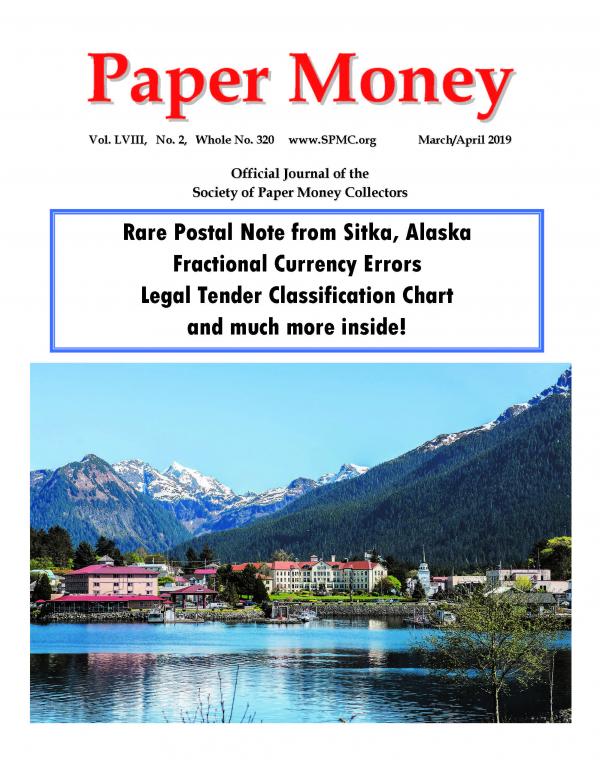Please sign up as a member or login to view and search this journal.

Table of Contents
Rare Postal Note from Sitka Alaska Surfaces--Kent Halland & Charles Surasky
1862-1863 Legal Tender Classification Chart--Peter Huntoon & Doug Murray.
3rd Issue Fractional Currency Errors (Part 2)--Rick Melamed
Uncoupled—Joe Boling & Fred Schwan
Origin of the Train Vignette on T-39 Confederate Notes--Marvin Ashmore & Michael McNeil
John Benjamin Burton--Charles Derby
United Cigar Stores Company Coupons--Loren Gatch
1917 $1 Fr. 37a Error--Peter Huntoon
Small Notes—Two $5 Master Plate Proofs
Membership Map
New SPMC Exhibit Program


